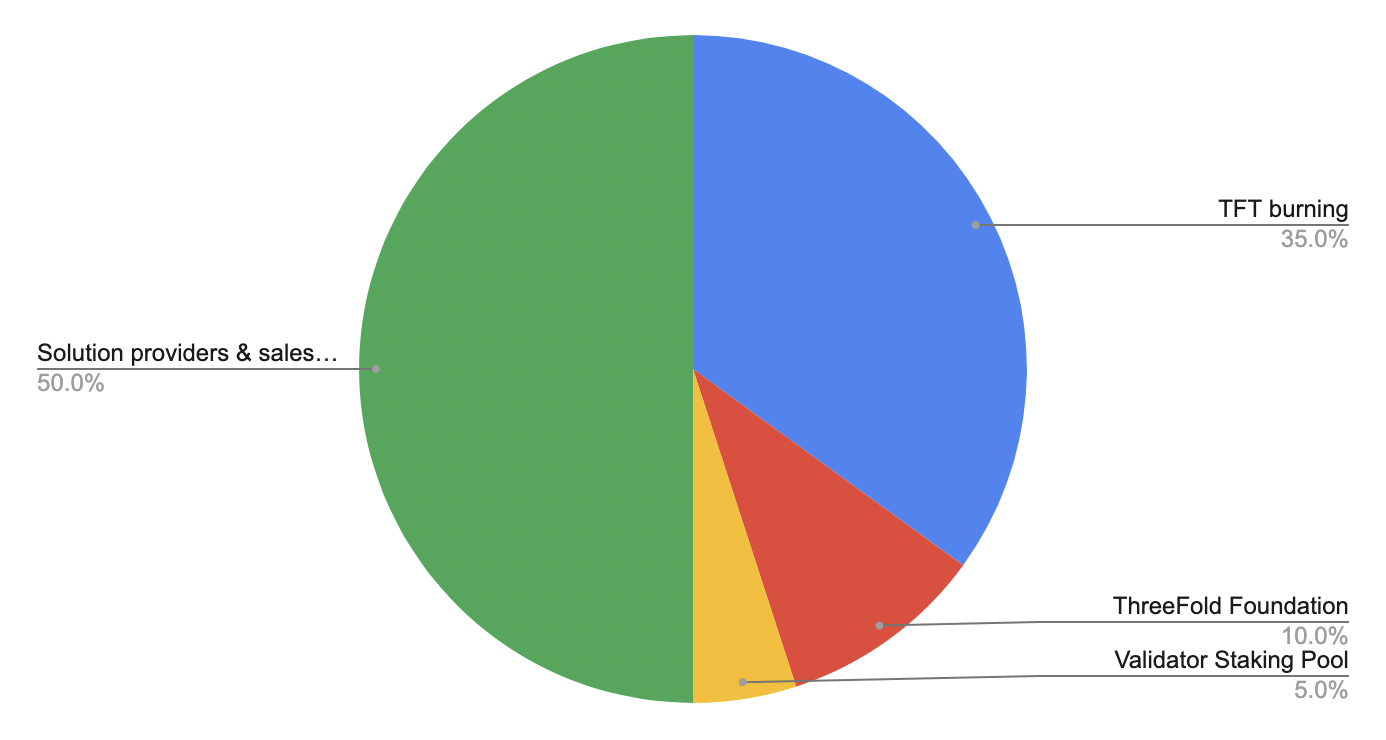ThreeFold Token Overview
Table of Contents
- Introduction to TFT
- Proof-of-Capacity
- Proof-of-Utilization
- TFT Distribution
- TFT Marketcap and Market Price
- Complemetary Information
- Disclaimer
Introduction to TFT
ThreeFold tokens, or TFTs, are exclusively generated when new capacity is added to the TF Grid. There are no centralized issuers. Tokens have not been created out of thin air.
While the ThreeFold Grid can expand, a maximum of 1 billion TFTs can ever be in circulation. This limit ensures stability of value and incentivization for all stakeholders.
TFT lives on the Stellar Blockchain. TFT holders benefit from a big ecosystem of proven wallets and mediums of exchange.
By employing Stellar technology, TFT transactions and smart contracts are powered by one of the most energy-efficient blockchains available. Furthermore, TFT is the medium of exchange on the greenest internet network in the world. The market for farming, cultivating and trading TFT is open to all.
Anyone with internet connection, power supply and necessary hardware can become a Farmer or trade ThreeFold tokens (TFT).
By farming, buying, holding, and utilizing ThreeFold Tokens, you are actively supporting the expansion of the ThreeFold Grid and its use cases — creating a more sustainable, fair, and equally accessible Internet.
Proof-of-Capacity
ThreeFold uses proof-of-capacity to mint tokens. Since the genenis pool, all tokens that are being minted are the result of farming. Minting will stop during 2024, to keep the total amount of TFT at 1 billion, instead of the previously planned 4 billion. Read more about this here.
For more details, see Proof of Capacity
Proof-of-Utilization
TFT is used on the TFGrid to purchase network, compute and storage resources through the proof-of-utilization protocol.
Proof-of-Utility Distribution Flow
For more details, see Proof-of-Utilization
TFT Distribution
The current supply distribution of TFT is as follows:
| Current Supply Distribution | Qty (Millions) |
|---|---|
| Farming rewards (as of 02-24 minting) | 290 |
| Ecosystem Grants | 22 |
| Promotion & Marketing Effort | 100 |
| Ecosystem Contribution, Liquidity Exchanges | 40 |
| Technology Acquisition + Starting Team | 290 |
| Advisors, Founders & Team | 241 |
| Current supply | 983 |
The supply distribution of TFT is as follows:
| Supply Distribution | Qty (Millions) |
|---|---|
| Current supply | 983 |
| Illiquid Supply | 66.5 |
| Circulating supply | 916.5 |
| Maximum supply | 1000 |
TFT Marketcap and Market Price
The TFT market price and marketcap are as follows:
| Description | Value |
|---|---|
| TFT Market Price | 0.048 USD |
| TFT Market Cap | 43,992,000 USD |
Note: The values here are subject to change. Check the current market conditions.
Complemetary Information
Disclaimer
Important Note: The ThreeFold Token (TFT) is not an investment instrument. TFTs represent IT capacity on the ThreeFold Grid, farmers create TFT, developers use TFT.

